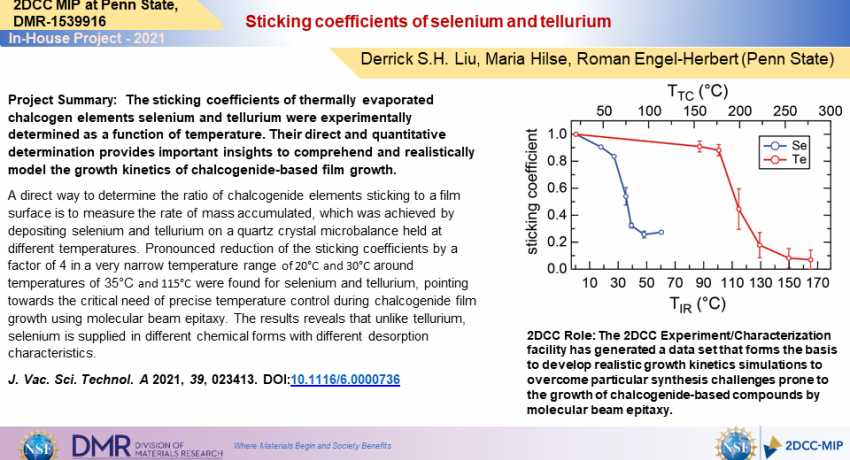What Has Been Achieved:
A new ReaxFF potential for large-scale simulations of structural engineering and synthesis of Two-dimensional WSe2 has been made available to the 2D community
Importance of the Achievement:
This is the first comprehensive empirical potential that is explicitly designed to capture the most prominent features of 2D WSe2 solid-phase chemistry, such as defect formation as a function of local geometry and chalcogen chemical potential, vacancy migration and phase transition, thus enabling cost-effective and reliable characterization of 2D WSe2 at much lower computational cost than density functional theory methods.
Unique Feature(s) of the MIP that Enabled this Achievement:
The MIP mission in serving the user community with computational tools that advance understanding of materials growth directly underpins and motivates this sustained effort on developing a suite of potentials for the 2D TMD system.
Publication:
Nayir, N.; Wang, Y.; Shabnam, S.; Hickey, D. R.; Miao, L.; Zhang, X.; Bachu, S.; Alem, N.; Redwing, J.; Crespi, V. H.; van Duin, A. C. T. Modeling for Structural Engineering and Synthesis of Two-Dimensional WSe2 Using a Newly Developed ReaxFF Reactive Force Field. J. Phys. Chem. C (2020),124 (51), 28285–28297. https://doi.org/10.1021/acs.jpcc.0c09155.
This work was supported by the National Science Foundation through the 2D Crystal Consortium − Materials Innovation Platform (2DCC-MIP) under the cooperative agreement DMR-1539916. D.R.H., S.B., and N.A. acknowledge support from the NSF CAREER program (DMR-1654107).
Credits/Names: Derrick S.H. Liu, Maria Hilse, Roman Engel-Herbert (Penn State)
Download PDF Version: 1539916_2DCCMIP_2021_StickingCoefficientsOfSeleniumAndTellurium.pdf
Year of Research Highlight: 2021
Select a Highlight Type: In-House Research Highlight
